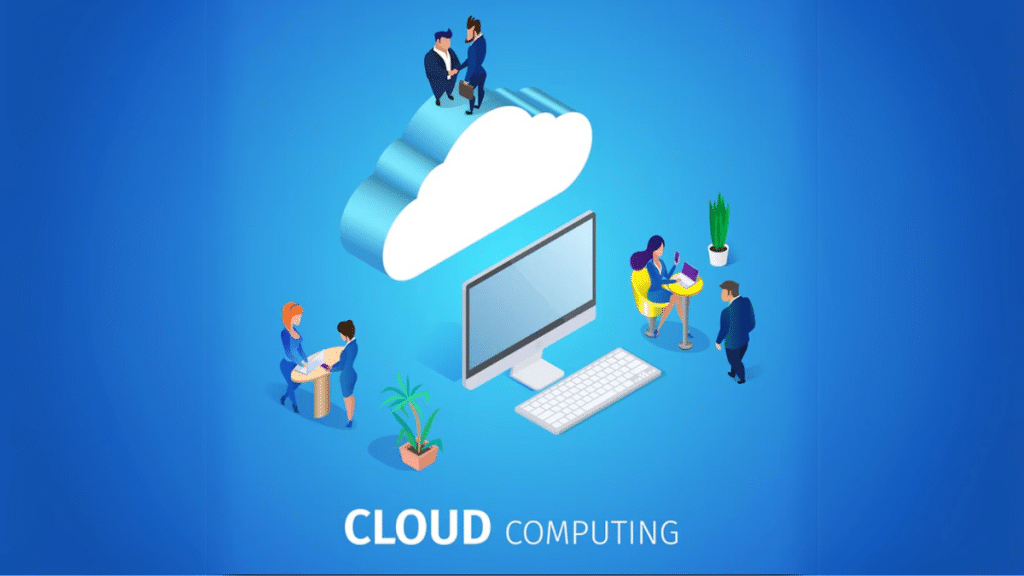Are you wondering what people mean when they say, “It’s stored in the cloud”? Maybe you’ve heard it while talking about photos, apps, or work files, and now you’re curious. Don’t worry—it’s not something confusing or hard to understand. Once you get the idea, it’s a pretty smart and simple concept.
Let’s walk through this together in a casual way. You’ll know what the cloud is, why people use it so much today, and how it can help make your life easier. Whether you’re at work, chilling at home, or playing games online, the cloud is already a part of your everyday life.
So, What Is the Cloud?
The cloud is a way to store and use data over the internet instead of keeping everything on your personal computer or phone. Instead of having big hard drives or carrying USBs, you can just upload your stuff online and access it from anywhere.
Think of it like this: your photos, documents, and even your apps are saved in a secure place on the internet. You can open them from your phone, tablet, laptop, or any device, as long as it has internet.
Why Do People Use the Cloud?
There are many smart reasons people choose the cloud today. First of all, it gives you freedom. You don’t have to sit at one specific computer to find your files. You can log in from anywhere and carry on with your work or even watch your favorite shows.
For businesses, cloud computing is like a friend that helps with storage, speed, and smart tools. Let’s say you’re running a website or an app like an online slot gaming platform like vegas338. Using cloud services means your app stays fast, handles lots of users, and keeps the data safe, without needing big machines in your office.
How Does the Cloud Work?
Let’s say you upload a photo from your phone to Google Photos. That image travels through the internet to a big computer (called a server) in a data centre. When you want to look at that photo again, Google fetches it from the same server and shows it to you.
These data centers are spread all over the world. And they’re maintained properly with backup power, cooling systems, and skilled engineers who make sure nothing goes wrong.
Types of Cloud Computing
Before we get into the list, here’s a small point: cloud computing comes in different styles, depending on what you need. Now, let’s go through them one by one.
1. Public Cloud
This one is for everyone. Companies like Google Drive, Dropbox, and iCloud offer public cloud services. You don’t have to manage anything. You just sign up, upload your files, and access them anytime.
2. Private Cloud
This is mostly used by big companies. Instead of sharing space with others, they have their own setup, sometimes on their own servers. It gives more control and suits companies with specific work needs.
3. Hybrid Cloud
This is a mix of both public and private. Some things are kept private, while others are shared on the public side. It gives more balance and flexibility to those who want the benefits of both.
Common Cloud Services You’ll Hear About
Now that you know the types, let’s talk about the services the cloud gives. There are three very common ones. Again, before listing them, just know these are like different levels of help the cloud offers based on what someone needs.
1. IaaS (Infrastructure as a Service)
Here, the cloud gives you the basic setup—storage, networking, and servers. You control the rest. This is good for companies that want flexibility but don’t want to buy big hardware.
2. PaaS (Platform as a Service)
This offers you both the tools and the setup. Developers love this because they can create and test apps directly on the cloud platform without managing the behind-the-scenes work.
3. SaaS (Software as a Service)
This one you already use—like Gmail, Zoom, and Netflix. You don’t download heavy software. You just use it online and get things done.
Why the Cloud Feels Like a Smart Choice
The best part about the cloud is how relaxed and convenient it makes things. You don’t need to carry around hard drives or worry about your computer crashing and losing everything.
With automatic updates, security checks, and easy sharing, the cloud feels like a friend that’s always looking out for you. Students use it to save their projects. Photographers use it to store photos. Families use it to keep memories safe.
Conclusion
Cloud computing is like a smart assistant that quietly supports your day-to-day activities. It makes everything lighter, easier, and more flexible. From storing photos to running businesses, the cloud helps you do more without needing extra tools or heavy gadgets.
